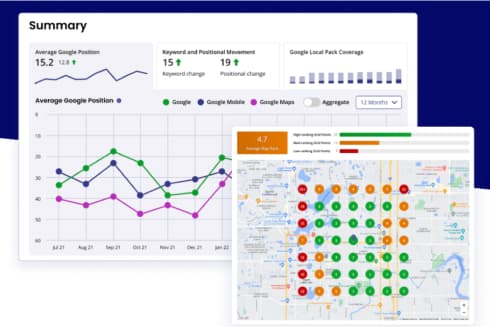Descriptive Text
A descriptive text’s main objective is to paint a clear and vivid image of an object, person, place, or situation in the reader’s mind. To achieve this, rich language is used with sensory descriptions that appeal to the five senses: sight, hearing, smell, taste, and touch.
In the paragraphs of a descriptive text, each sentence should contribute to building a complete and accurate image. It’s important to use varied adjectives and adverbs to avoid repetition and maintain the reader’s interest. Additionally, metaphors and similes can be useful tools to enrich the description and make it more evocative.
The order in which details are presented is also crucial. One can follow a logical or spatial sequence, such as describing an object from top to bottom or a place from left to right. This helps the reader follow the description coherently and better understand the described object.
Another important aspect is precision and specificity. Instead of using general terms, specific words should be used to capture exactly what is being described. For example, instead of saying “a large tree,” one can say “an imposing oak with green, shiny leaves.”
Expository Text
An expository text is a type of writing whose purpose is to provide detailed and precise information about a specific topic. Unlike descriptive text, which focuses on creating a vivid image in the reader’s mind, expository text focuses on explaining, informing, and clarifying concepts objectively.
Each paragraph in an expository text should address a specific aspect of the main topic. The structure typically follows a logical and coherent order, which may be sequential, chronological, cause and effect, or comparative, depending on the topic and the purpose of the writing. The use of logical connectors is essential to ensure cohesion and flow between paragraphs.
The language used in an expository text is clear and direct, avoiding literary embellishments or subjective language. Precision in terminology is crucial, especially when explaining technical or scientific concepts. Definitions, examples, and statistical data are common tools that help clarify and support the presented information.
A typical expository paragraph begins with a topic sentence that introduces the main idea of the paragraph. This is followed by supporting sentences that develop the idea, providing details, explanations, and examples. Finally, a closing sentence may summarize the presented information or transition to the next paragraph.
Scientific Text
A scientific text is a form of writing that focuses on the presentation and communication of information based on research and scientific studies. This type of text is fundamental for the advancement of knowledge in various disciplines, as it allows researchers to share their findings with the scientific community and the general public.
Each paragraph in a scientific text should be clear and concise, presenting relevant and specific information about the topic being discussed. The language is technical and precise, and the use of opinions or subjective judgments is avoided. The structure of the paragraphs usually follows a logical and organized format, facilitating the understanding and analysis of the presented information.
Paragraphs in a scientific text generally include a topic sentence that introduces the main idea of the paragraph. This is followed by supporting sentences that develop the idea, providing specific details, numerical data, and references to previous studies. The use of graphs, tables, and figures to illustrate and complement the written information is common.
Accuracy and veracity are crucial in scientific texts. Each claim must be supported by empirical evidence and references to previous work. This not only strengthens the credibility of the text but also allows other researchers to verify and reproduce the results. Citations and references are essential elements that must be correctly formatted according to the appropriate citation style (such as APA, MLA, or Chicago).
Additionally, scientific texts usually follow a specific structure, which includes sections such as introduction, methodology, results, discussion, and conclusions. Each section has a defined purpose and contributes to the logical and coherent development of the document.
Argumentative Text
An argumentative text is a type of writing designed to convince the reader about a specific idea, opinion, or position. To achieve this, the author presents solid arguments and evidence that support their point of view while refuting possible counterarguments.
Each paragraph in an argumentative text should contribute to the development of the main argument. The first paragraph, or introduction, presents the thesis or position of the author, which is the central idea that will be defended throughout the text. The introduction may also include a brief explanation of the context or the topic under discussion, preparing the reader for the arguments that will follow.
The body paragraphs of the text are dedicated to presenting the arguments that support the thesis. Each paragraph generally starts with a topic sentence that introduces the specific argument to be developed. This is followed by supporting sentences that provide evidence, examples, data, and citations from authoritative sources. Logic and coherence are essential, as the arguments must be constructed clearly and persuasively.
It is common for the argumentative text to include a paragraph or section dedicated to addressing and refuting counterarguments. This approach strengthens the author’s position by demonstrating that other perspectives have been considered and reasons have been found to reject them. Effectively refuting counterarguments requires understanding possible objections well and having solid evidence or reasoning to counter them.
The conclusion paragraph summarizes the main points of the argument and reaffirms the thesis. It may also include a call to action or a final reflection inviting the reader to consider the topic more deeply.
Narrative Text
A narrative text is a type of writing that aims to recount facts or events in a temporal order, creating a story that can be fictional or based on real events. This type of text is used in novels, short stories, accounts, and anecdotes and is characterized by its ability to entertain, inform, or move the reader.
Each paragraph in a narrative text contributes to the development of the story, whether advancing the plot, developing characters, or describing the setting. The basic structure of a narrative text includes an introduction, development, climax, and conclusion.
Introduction: The introduction establishes the story’s setting, introduces the main characters, and places the reader in the temporal and spatial context of the events. It may start with a description of the place, an initial situation, or an event that captures the reader’s attention.
Development: In the development, the plot progresses through a series of events and actions. Each paragraph should contribute to this progression by introducing conflicts, challenges, or situations that the characters must face. It is important to maintain an appropriate pace and build tension to keep the reader’s interest. Dialogues, descriptions, and actions are key elements that enrich the narrative and add depth to the characters and the setting.
Climax: The climax is the story’s high point, where the main conflict reaches its maximum tension. In this section, the characters face the greatest challenges and make crucial decisions. It is the most exciting and decisive moment in the narrative.
Conclusion: The conclusion resolves the conflicts raised throughout the story and provides a resolution to the plot. It may offer a definitive closure or leave certain aspects open to interpretation, depending on the author’s purpose. In any case, it should provide a sense of conclusion or reflection on the narrated events.
The language in a narrative text is usually varied and dynamic, using vivid descriptions and realistic dialogues to bring the story to life. Narrators may be in the first person, providing an intimate and personal perspective, or in the third person, offering a broader and more objective view of the events.
Literary Text
A literary text is a form of written expression distinguished by its creativity, style, and emotional depth. Its main objective is to explore and communicate human experiences, feelings, and ideas, often using figurative language and stylistic devices that enrich the reading experience.
Introduction to Literary Text: Literary texts can address a wide range of themes, from love and nature to identity and the human condition. The introduction of a literary text often sets the tone, style, and context of the work. It may present characters, settings, or situations that capture the reader’s attention and invite them to immerse themselves in the world created by the author.
Development of the Narrative: In literary narrative texts, such as novels and short stories, the development of the story is fundamental. The paragraphs in this section focus on advancing the plot, the evolution of characters, and the creation of a rich and detailed environment. The use of evocative descriptions, realistic dialogues, and internal monologues allows for a deeper exploration of the character’s motivations and emotions, making the story more engaging and meaningful.
Style and Literary Devices: A distinctive feature of literary texts is the author’s unique style and the use of literary devices such as metaphors, similes, alliterations, and symbolism. These elements not only beautify the language but also add layers of meaning and allow the reader to interpret and appreciate the work in multiple ways. The structure of paragraphs can vary considerably, from long and elaborate sentences to short and punchy ones, depending on the effect the author wants to achieve.
Poetry and Drama: In poetry, paragraphs are replaced by verses and stanzas, where rhythm, meter, and rhyme play a crucial role in expressing content. Poets use condensed and figurative language to convey deep emotions and complex thoughts in a compact form. Drama, on the other hand, consists of dialogues and stage directions that develop the plot and characters through their interactions and conflicts in a theatrical format.
Conclusion and Reflection: The conclusion of a literary text may offer closure to the story or leave the reader with open questions and reflections. In many cases, the conclusion aims to resonate emotionally with the reader, leaving a lasting impression. Literary essays, although not narrative, also conclude with deep reflections that invite the reader to reconsider their perceptions and beliefs.
Advertising Text
An advertising text is a form of writing designed to attract and persuade a target audience to promote products, services, ideas, or events. This type of text is found in advertisements, brochures, marketing emails, posters, and various digital and traditional platforms.
The first paragraph of an advertising text aims to capture the reader’s attention immediately. This is achieved through impactful headlines, catchy phrases, or provocative questions. The goal is to spark the reader’s curiosity and interest to continue reading. The language used is usually direct and focused on the benefits the reader can gain.
In the following paragraphs, the advertising text presents the product or service in a detailed but concise manner. Key features, benefits, and advantages that differentiate it from the competition are highlighted. It is crucial that this section uses persuasive and positive language, focusing on how the product or service can solve a specific problem for the reader or improve their life.
Including customer testimonials, statistical data, and guarantees can strengthen the credibility of the text and build trust with the reader. These elements provide tangible proof of the product or service’s effectiveness and quality, making the reader feel more confident and willing to take action.
The advertising text should also include a clear and direct call to action, indicating what the reader is expected to do next. This could be buying the product, subscribing to a newsletter, visiting a physical or online store, or any other desired action. The call to action should be urgent and motivating, using phrases like “Buy now!”, “Don’t miss out!”, or “Join today!”.
Finally, the language of the advertising text is crucial for its effectiveness. It should be appealing, easy to understand, and resonate with the emotions and needs of the target audience. The use of words and phrases that evoke positive feelings, such as happiness, success, security, or comfort, can help persuade the reader. Additionally, it is important to keep the text clear and concise, avoiding unnecessary information that may distract or overwhelm the reader.
Historical Text
A historical text focuses on recounting and analyzing events, people, and contexts from the past. Its goal is to provide a detailed and accurate understanding of how and why certain historical events occurred, as well as their consequences. These texts are found in history books, academic articles, and essays.
Each paragraph in a historical text should present relevant and verifiable facts, organized chronologically or thematically. The description of events is based on historical sources and documents, and the aim is to contextualize the information to offer a comprehensive view of the period.
The language is objective and precise, avoiding personal opinions and focusing on presenting data and evidence. Historical texts often include quotations from original documents and references to previous research to support claims.
Legal Text
A legal text primarily aims to expose, interpret, and apply legal norms and principles. It is used in documents such as laws, contracts, judgments, and legal opinions. These texts seek to provide clarity and precision in the application of the law.
Each paragraph in a legal text focuses on a specific issue, using formal and technical language. Definitions and legal terms must be precise to avoid ambiguities. Legal texts often follow an organized structure, with clearly delineated sections for each aspect of the legal matter being addressed.
The legal text must cite and reference relevant norms, laws, and precedents to support arguments or conclusions. Additionally, the text should be exhaustive and consider all possible interpretations and applications of legal norms.
Digital Text
A digital text refers to any type of written content presented in digital format, such as on websites, blogs, social media, emails, and electronic documents. Its primary goal is to communicate information or ideas through electronic media, adapting to the characteristics and needs of digital formats.
Each paragraph in a digital text should be clear and concise, considering that internet users tend to scan content rather than read it thoroughly. The structure of digital text is often more flexible, using headers, lists, and brief paragraphs to facilitate quick reading and navigation.
The language in a digital text should be accessible and tailored to the target audience, using terms and expressions that are understandable and relevant. It is common for digital texts to include links to other pages or resources, multimedia elements such as images or videos, and calls to action to engage with the content.
Search engine optimization (SEO) is also an important aspect of digital texts, ensuring that the content is easily discoverable and relevant to users’ search terms.
Journalistic Text
A journalistic text primarily aims to inform the public about current events, facts, and topics of interest. It is found in newspapers, magazines, news websites, and other media outlets. These texts seek to provide clear, precise, and objective information.
Each paragraph in a journalistic text should start with the most important and relevant information, following the inverted pyramid principle. That is, the most crucial facts are presented first, followed by additional details and context in subsequent paragraphs.
The language in a journalistic text should be clear and direct, avoiding unnecessary jargon and maintaining objectivity. Journalistic texts often include quotations from sources, verifiable data, and a balanced presentation of different viewpoints to offer a comprehensive view of the topic.
Additionally, the journalistic text should capture the reader’s attention with striking headlines and opening paragraphs that effectively summarize the news. Texts may also include visual elements such as photos, graphics, and tables to complement and enhance the information presented.
Conclusion
Each type of text serves a specific purpose and uses different structures and styles to achieve its goal. Descriptive texts focus on detailing and painting a vivid picture of an object or place. Expository texts inform clearly and logically about a topic. Scientific texts communicate discoveries with precision and empirical evidence. Argumentative texts persuade the reader with arguments and counterarguments.
Narrative texts recount a story through a sequence of events and character development. Literary texts explore experiences and emotions with aesthetic and creative language. Advertising texts aim to convince the reader to take a specific action through engaging language.
Instructional texts offer clear steps for performing a task. Historical texts analyze past events based on evidence. Legal texts expose and apply legal norms with technical precision. Digital texts adapt to electronic formats, using accessible language and user-friendly structures. Journalistic texts inform about current events clearly and objectively. Each type of text adapts to its objectives and communication needs, using the most suitable style and structure.












